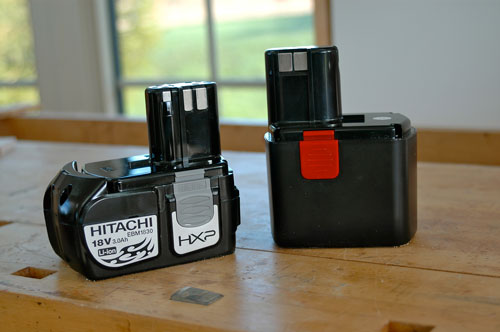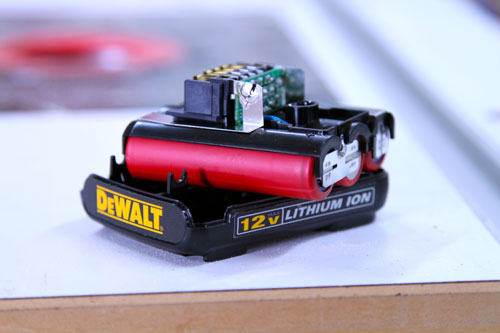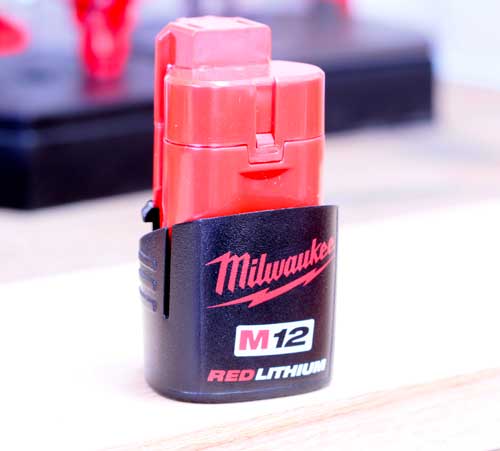Simplifying your Tool Battery Choices in a Complicated World
The enhanced performance of today’s best cordless tools is largely about the quality of batteries that power them, and the challenge you face as a tool user involves making sense of the wide range of battery choices. Nickel cadmium, nickel metal hydride, lithium-ion, red lithium – all in assorted voltages. Which kind is best? To make matters more confusing, there’s plenty of antiquated battery and charger technology still being sold in brand new tools. It’s a complicated mix of different voltages, amperages and battery chemistries, and to understand how to make sense of it all you first need to see how we got where we are.
Cordless tools began as an inconsequential blip on the construction scene in the mid-1980s, just as I was entering the professional trades. Ever-increasing tool voltages was the game manufacturers played with each other back then, and though it did create truly useful cordless tools in the end, it also left behind mountains of incompatible chargers and nickel cadmium battery packs.
 Nickel metal hydride batteries came along next, and they were touted as the next big thing in cordless tools in the mid-1990s, but these fizzled out pretty quick. In 2005, a truly game-changing advance appeared in the form of lithium-ion tool batteries, and manufacturers immediately used this technology to create more powerful and expensive tools, topping out at 28- and 36-volts. Trouble was, tool users were not eager to spend big bucks on heavy tools, leading to a few years of sales stagnation before the trades enthusiastically embraced the new subcompact cordless tool category that’s hot right now.
Nickel metal hydride batteries came along next, and they were touted as the next big thing in cordless tools in the mid-1990s, but these fizzled out pretty quick. In 2005, a truly game-changing advance appeared in the form of lithium-ion tool batteries, and manufacturers immediately used this technology to create more powerful and expensive tools, topping out at 28- and 36-volts. Trouble was, tool users were not eager to spend big bucks on heavy tools, leading to a few years of sales stagnation before the trades enthusiastically embraced the new subcompact cordless tool category that’s hot right now.
Invest in the System, Not Just the Battery
Nickel cadmium (NiCad), nickel metal hydride (NiMh) and lithium-ion (Li-ion) are the three main cordless tool battery chemistries available today. NiMh is fast sinking into obscurity, so the only batteries worth considering for your next tool purchase is NiCad and Li-ion. NiCad has been around since the first days of cordless tools, and it’s a mature technology. Li-ion offers better performance in many ways, and is the exclusive focus of several tool manufacturers.
 Efficiency gains offered by cordless tools are quickly lost if you’ve got to fumble with a lot of incompatible battery packs and chargers. That’s why it’s vital that you build a collection of tools that work together with room to expand. Some tool brands offer seamless cross compatibility between NiCad and Li-ion, and that’s a good thing if you’ve got an existing stock of tools you’re looking to add to. If you’re building a new system of chargers, tools and batteries, however, Li-ion is worth a close look. That said, there is an issue to watch out for.
Efficiency gains offered by cordless tools are quickly lost if you’ve got to fumble with a lot of incompatible battery packs and chargers. That’s why it’s vital that you build a collection of tools that work together with room to expand. Some tool brands offer seamless cross compatibility between NiCad and Li-ion, and that’s a good thing if you’ve got an existing stock of tools you’re looking to add to. If you’re building a new system of chargers, tools and batteries, however, Li-ion is worth a close look. That said, there is an issue to watch out for.
The growing pressure on some power tool companies to create inexpensive models for the consumer market has let to a two-tiered system of batteries with the same chemistry and voltages. In order to preserve pro-grade performance in their professional tool lines, a few manufacturers make it impossible to plug consumer-grade battery packs into pro-grade tools, even when voltage and visual pack appearance is the same. The bigger pro-grade packs can, however, plug into consumer-grade models. Check things out beforehand to avoid the frustration of seemingly compatible batteries that won’t plug into certain tools.
Choosing power tools is about a lot of things: how they feel in your hand, how your local supplier treats you, what the current deals are where you live, and how specific models fit into your system. And while these things are up to you to decide on, you’ve now got some technical facts to make informed decisions.
 Sidebar: NiCad Versus Li-ion
Sidebar: NiCad Versus Li-ion
Lithium-ion is the up-and-coming battery technology that’s receiving the most R&D attention because it holds so much promise. Nickel cadmium battery technology is mature, with a large existing presence in the tool world. How much work a battery can do between charges is measured by the amp-hour rating of that battery, and it’s the same for all types of battery chemistries. Here’s how the two leading battery types compare overall:
| NiCad Pros: | NiCad Cons: |
| relatively inexpensive | heavy batteries deliver relatively low power to weight ratio |
| endures moderate number of charge/discharge cycles | safe disposal requires specialized handling as toxic waste |
| high self-discharge rate (20% per month) | |
| batteries damaged by use and charging under cold/hot conditions | |
| Li-Ion Pros: | Li-Ion Cons: |
| lightweight batteries delivers top-of-class power to weight ratio | service life dependent on battery age, not usage |
| very low self discharge rate (5% per month) | currently more expensive per unit of work completed than NiCads |
| much less environmentally hazardous disposal than NiCads | |
| the best current Li-ion technology performs well at temperatures down to 20ºC below freezing. |
 Sidebar: Sub-Compact
Sidebar: Sub-Compact
Although manufacturers originally saw Li-ion batteries as a way to make cordless tools more powerful, the marketplace really wanted smaller, lighter and more diverse cordless tools. This trade-driven demand is why sub-compact 12-volt tools are so popular right now, and it’s not too much to say that sub-compact is changing the way we build. These small and very lightweight 12-volt battery packs are making brand new kinds of cordless tools technically feasible. These include copper pipe cutters, infrared thermometers that read surface temperatures remotely, pouch-sized reciprocating saws, test and measurement equipment for electrical testing and diagnosis, PEX pipe expanders and even cordless heated work jackets.
 Sidebar: Voltage Choices Simplified
Sidebar: Voltage Choices Simplified
The 1990s left behind a mishmash of antiquated cordless tool voltages, but you really only need three. 18-volt cordless tools are a good all-around kind for drilling and driving screws. Although this size used to be a little on the heavy side, Li-ion batteries deliver very powerful 18-volt models that are lighter in weight than previous 14.4-volt NiCad tools. You’ll find 12-volt sub-compact tools surprisingly powerful for their size and weight, with the best impact drivers in this category able to drive screws up to 3” – 3 1/2” long. There may be times when heavy work like cutting with a circular saw or drilling large holes in masonry demands 28- or 36-volt tools, though you might also consider corded models instead.
 Sidebar: Third Generation Lithium-Ion
Sidebar: Third Generation Lithium-Ion
If you know where to look you’ll find so-called third wave Li-ion battery technology, and there are three things that separate it from other current second-generation Li-ion batteries: increased power to weight ratio, excellent cold weather performance and longer service life. It probably won’t be long before third generation Li-ion technology becomes mainstream across all cordless tools, but for now it’s ahead of the pack and only available in certain tools.